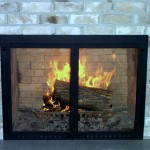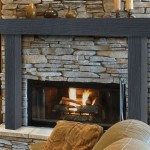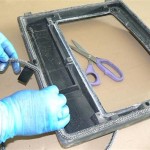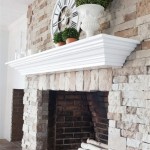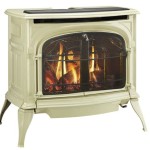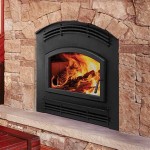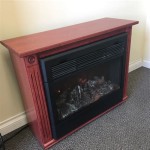Large Clay Chiminea Outdoor Fireplace: A Comprehensive Overview
The large clay chiminea outdoor fireplace offers a practical and aesthetically pleasing solution for extending outdoor enjoyment throughout the year. Combining the rustic charm of clay craftsmanship with the functionality of a heating appliance, these chimineas have become increasingly popular in patios, gardens, and outdoor living spaces. Understanding their construction, benefits, and maintenance requirements is essential for maximizing their utility and longevity.
Clay chimineas, historically used for cooking and heating in various cultures, are now primarily employed for creating a warm and inviting atmosphere outdoors. The large size typically refers to models exceeding four feet in height, offering a substantial presence and radiating a significant amount of heat. The size allows for larger fires, making them ideal for gatherings and providing a focal point for outdoor spaces.
Construction and Materials of Clay Chimineas
The basic design of a clay chiminea consists of a bulbous body, a chimney extending upwards, and an opening at the front to facilitate loading wood and viewing the fire. The construction process typically involves molding and firing clay, a technique that has been refined over centuries. The type of clay used, the firing temperature, and the presence of additives all influence the durability and heat resistance of the finished product. Some manufacturers add strengthening agents like fiberglass or other aggregates to the clay mix, enhancing its ability to withstand thermal stress and environmental conditions.
Traditionally, clay chimineas are handmade, imparting unique characteristics to each piece. However, modern manufacturing techniques also exist, allowing for more consistent production and often involving molds for shaping the clay. Regardless of the manufacturing method, the final product undergoes high-temperature firing to harden the clay and remove moisture. This process results in a porous material that can absorb and radiate heat efficiently.
The clay material itself is susceptible to cracking, especially when exposed to rapid temperature changes or moisture. Therefore, protective measures are often recommended, such as curing the chiminea before its first use and covering it during inclement weather. Some chimineas feature metal inserts or liners to provide additional protection to the clay, particularly in the firebox area.
Benefits of Using a Large Clay Chiminea
Large clay chimineas offer several benefits that contribute to their popularity as outdoor heating appliances. These benefits extend beyond simple heat provision and encompass aesthetic, functional, and environmental aspects.
Firstly, the radiated heat output is significant. The large size of the chiminea allows for a larger fire to be built, providing ample warmth for a considerable area around the unit. This makes them suitable for heating patios, decks, and other outdoor gathering spaces, extending the usable season of these areas into cooler months.
Secondly, the design of the chiminea directs smoke upwards and away from occupants. The chimney effect minimizes the risk of smoke blowing into the faces of those sitting nearby, enhancing comfort and reducing the potential for irritation. The controlled combustion also contributes to a more efficient burning process, reducing the amount of smoke produced.
Thirdly, the aesthetic appeal of a clay chiminea adds to the ambiance of any outdoor setting. The rustic, earthy appearance complements various architectural styles and landscaping designs. The warm glow of the fire visible through the opening creates a welcoming and relaxing atmosphere, making it a focal point for social gatherings.
Finally, clay chimineas are relatively easy to use. They require no electricity or gas connection, relying solely on wood as fuel. This makes them a practical option for off-grid locations or areas where running utilities is inconvenient. The simple design also makes them straightforward to operate and maintain.
Maintenance and Care of Clay Chimineas
Proper maintenance and care are crucial for extending the lifespan of a large clay chiminea and ensuring its safe operation. Clay is a porous material and can be susceptible to damage from moisture and temperature fluctuations. Following these guidelines can mitigate these risks.
Curing the chiminea is an essential first step. This involves gradually building small fires inside the chiminea over several days to allow the clay to slowly adapt to the heat. This process helps to reduce the risk of cracking during the first few uses. Start with a small fire for a short duration and gradually increase the size and duration over subsequent burns.
Using seasoned firewood is critical. Wet or unseasoned wood produces excessive smoke and creosote buildup, which can damage the chiminea and pose a fire hazard. Seasoned wood burns cleaner and more efficiently, producing less smoke and more heat. Hardwoods such as oak, maple, and ash are generally preferred for their higher heat output and longer burn times.
Protecting the chiminea from the elements is equally important. When not in use, covering the chiminea with a waterproof cover can prevent moisture from seeping into the clay. This is particularly crucial during the winter months when freezing temperatures can cause expansion and contraction, leading to cracks. Placing the chiminea on a raised platform or gravel bed can also help to prevent moisture from wicking up into the clay.
Regularly cleaning out ash and debris from the firebox is necessary. Accumulated ash can trap moisture and contribute to corrosion. Using a metal shovel or ash rake, remove the ash after each use or whenever it reaches a significant level. Inspect the chiminea regularly for cracks or other signs of damage. Small cracks can often be repaired with clay sealant or heat-resistant mortar. If larger cracks appear, it may be necessary to replace the chiminea.
By adhering to these maintenance practices, users can prolong the life of their large clay chiminea and continue to enjoy its warmth and ambiance for years to come. The combination of careful usage and preventative measures will contribute to both safety and longevity of this outdoor fireplace.

Charming Chimineas

Chimineas In Hanover Pa

Owning A Clay Chiminea They Any Good

Beige Outdoor Clay Chiminea Fireplace Maya Design Charcoal Burning Fire Pit With Sy Metal Stand Barbecue Com

Jumbo Natural Terracotta Clay Chimenea Fire Pit Outdoor Garden Bar

Custom Large Clay Chiminea Outdoor Fireplace Randolph Indoor And Design Fire Pit Chimney

What To Know About Chimineas The Family Handyman

Mexican Clay Chiminea

Best Chimineas Of 2024 7 Picks To Cozy Up Your Patio Ehow

8 Best Chiminea Fire Pits For Your Backyard Clay Steel And More
Related Posts

